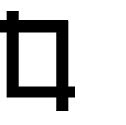


出品:Frontline
片名:The Tank Man
中文名:阻挡坦克的勇者
编写、制片、导演:Antony Thomas
类型:记录
播出:PBS
出品时间:2006.04.11
时长:95分钟
官方网址:
http://www.pbs.org/wgbh/pages/frontline/tankman/
语言:英语
字幕:中文(字幕由顺耳制作)
编码:Xvid
文件大小:698MB
尺寸:640x480
画质:优/dvd画质
推荐度:鼎力推荐
下载:
[indypeer.org].PBS.Frontline.-.The.Tank.Man.(2006.TVRip.SoS).avi
[indypeer.org].PBS.Frontline.-.The.Tank.Man.(2006.TVRip.SoS).srt
详情:
http://www.verycd.com/files/e423350b55c4c9228d582ce8386a2686732448768
http://www.verycd.com/files/264d61baceb2627ecc50f8fc11bc87d363712
射手网字幕下载:
http://www.shooter.cn/sub/detail.html?id=52055&film=PBS%20Frontline%20-%20The%20Tank%20Man%20%202006%20TVRip%20SoS/PBS%20Frontline%20-%20The%20Tank%20Man%20%202006%20TVRip%20SoS/The%20Tank%20Man/%E5%9D%A6%E5%85%8B%E4%BA%BA
旁观中国介绍:
(改编自顺耳中文字幕前言部分)
今晚的节目是
中国,北京
1989年6月
天安门广场。
有人向我哀嚎:
拍下来,拍下来!
告诉世界!
告诉历史!
他们在屠杀!
我从血海中惊醒,
当看到——
一个孤身年轻人现身,
挑战国家机器。
他挡住成排的坦克:
停
下
来
!
坦克
停了
来
。
他
他,
是谁?
他,
现在怎样了?
他,
消失了。
今晚,
安东尼.托马斯,
和我们一起
探寻他的命运。
2006,
一整年的时间
我们追述每一个线索
研究中国领导人
为扑灭
天安门精神
下的政治赌注。
你,
怎么阻止
精神烈火的蔓延?
你
见过一个安全局的人,
对待一个公民,
极端粗暴,
严厉控制。
在谷歌上
没有任何一张
这个年轻人阻挡坦克的照片。
美国的网络公司:
Google、雅虎、思科和微软
放弃了他们的道义。
他们说,
“这不是我们要做的事,
更不是我们引以为豪的事。”
在今晚的前线节目
你将看到
这张
当代最具震撼力的照片
背后的故事。
这个年轻人所作的,
实际上
改变了世界,
我们在探索
这个时刻的意义,
和他背后
鲜为人知的秘密。
On June 5, 1989, one day after the Chinese army's deadly crushing of the 1989 Tiananmen Square protests in Beijing, a single, unarmed young man stood his ground before a column of tanks on the Avenue of Eternal Peace. Captured on film and video by Western journalists, this extraordinary confrontation became an icon of the struggle for freedom around the world.
Seventeen years later, veteran filmmaker Antony Thomas goes to China in search of "The Tank Man." Who was he? What was his fate? And what does he mean for a China that today has become a global economic powerhouse?
Drawing on interviews with Chinese and Western eyewitnesses, Thomas recounts the amazing events of the spring of 1989, when a student protest that began in Tiananmen Square, the symbolic central space of the nation, spread throughout much of the rest of China. Several weeks later, when the government sent in the army to end the demonstrations, the citizens of Beijing poured into the streets in support of the students. "You had a million people on the street, minimum. ... That was unprecedented, definitely in modern Chinese post-revolutionary history," says John Pomfret, who was in Beijing at the time, reporting for the Associated Press.
The demonstrations ended in a massacre on the night of June 3-4, when the government sent the troops into the city with orders to clear Tiananmen Square. Eyewitnesses recount what happened -- from the first shots fired in the city's outskirts, to the students' withdrawal from the square in the early hours of June 4, to the Tank Man's courageous stand the following day.
From there, Thomas looks at what the Tank Man's life might be like in today's China. China observers and scholars, including Orville Schell, talk about the turning point the nationwide unrest of 1989 represented. "After the massacre of 1989, [Chinese leader Deng Xiaoping] in effect said, 'We will not stop economic reform; [but] we will, in effect, halt political reform.'"
Almost two decades later, the educated elite who led the protests of 1989 have benefited handsomely from China's rapid economic growth, but many Chinese workers still face brutal working conditions and low wages. "A lot of factories do not even have one day off," says labor expert Dr. Anita Chan who has been researching working conditions inside China for 15 years. "That means seven days a week, 13 hours a day."
In fact, some experts see the emergence of two Chinas: one modern, wealthy and urban; the other rural, poor and disenfranchised. There is evidence that unrest among workers and peasants is growing; in 2005, there were more than 87,000 "civil disturbances" in the country.
"China is on a knife's edge," says Dr. Nicholas Bequelin of Human Rights Watch. "If we in the West are not aware of this, the leaders in Beijing are very much so, and this is their top concern. They know that the stability is very fragile."
The Chinese government has responded to this threat by cracking down on dissent, and on the media. The regime has managed to erase the Tank Man's image, famous throughout the world, from Chinese memory. Thomas shows the iconic picture to undergraduates at Beijing University, the nerve center of the 1989 protests; none of them recognize it. Central to the regime's struggle to control information is its filtering of the Internet, a complex undertaking that raises serious issues about the role of Western IT companies in China's censorship strategy.
In the face of official silence about 1989 and the Tank Man, the program concludes with Thomas' quest to find out what became of the Tank Man and who he was. In the end, his identity remains a mystery, but the symbolism of his act of defiance continues to have power. "That story ... is not getting weaker because of time. Because we don't know who he is, it's actually getting stronger," says Xiao Qiang of the China Internet Project at the University of California at Berkeley. "In the long frame of history ... human freedom, courage, dignity will stay and prevail, and that's what that picture will testify [to] forever."

1 条评论:
难得的资源
发表评论